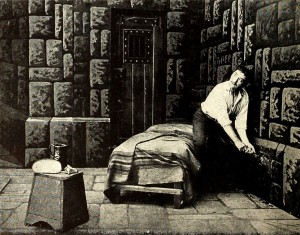By Jack El-Hai (Regular Contributor)
The Count of Monte Cristo by Alexandre Dumas appears on many lists of the greatest novels, and twice I have attempted to read it. The first time, about ten years ago, I devoured the opening third of the book, which covers the framing and unjust imprisonment of young Edmond Dantès on charges of treason against the post-Bonapartist French government of 1815, along with his exciting and elaborately planned escape from confinement. I ran into trouble during the remainder of the book, however, which concerns Dantès’s efforts to exact revenge upon the people who sent him to prison. The hero’s search for vengeance struck me as sour, predictable, and unworthy of the man who so cleverly and bravely had foiled his jailers, and I gave up the book half-way through.
Three years ago, I again tried reading The Count of Monte Cristo. This time I made it to the end of the book, but again I found the concluding half far less engaging than the opening. It seemed as if two different authors had written this novel: one who told a tale of spellbinding adventure, and a second who wrote turgidly of the angst of a damaged and unappealing man.
As it happens, some literary scholars now believe that two writers did compose The Count of Monte Cristo (as well as many other works solely credited to Dumas, including The Three Musketeers), although the co-authors did not divide the novel in the way I had envisioned.
Dumas’s collaborator was Auguste Maquet, who was born in Paris in 1813 and received academic training as a historian. Unsuccessful in publishing his own historical novels, Maquet met Dumas in 1838 and began a close literary partnership with the well-known writer that lasted nearly twenty years. Maquet researched history, outlined plots, and sketched characters, while Dumas wrote dialogue, filled in events, provided lovely language and embellishment, and built upon the skeletons that Maquet offered him. Dumas got the byline and recognition; Maquet received a share of the royalties.
Maquet seems to have seen his collaborator as the real genius in the enterprise, and he regarded himself as more of a craftsman. Late in their partnership, Maquet tried to wrest from Dumas public acknowledgment of his contributions, but he failed in court. Several of Maquet’s own novels were published under his name during his life, including such now-forgotten titles as Debts of the Heart, Beautiful Gabrielle, and Madame de Limiers.
Maquet outlived Dumas by eighteen years and died in 1888, but his heirs kept an eye on the royalty statements. During the early years of the twentieth century, family members successfully sued in French court to recover money still owed them from sales of Dumas’s novels.
A film released in 2010, The Other Dumas, stars Gerard Depardieu in an examination of the relationship between Dumas and Maquet.
Further reading:
Dumas, Alexandre (with Auguste Maquet). The Count of Monte Cristo. P.F. Collier, 1846.
Schopp, Claude. Alexandre Dumas: Genius of Life. Franklin Watts, 1988.

